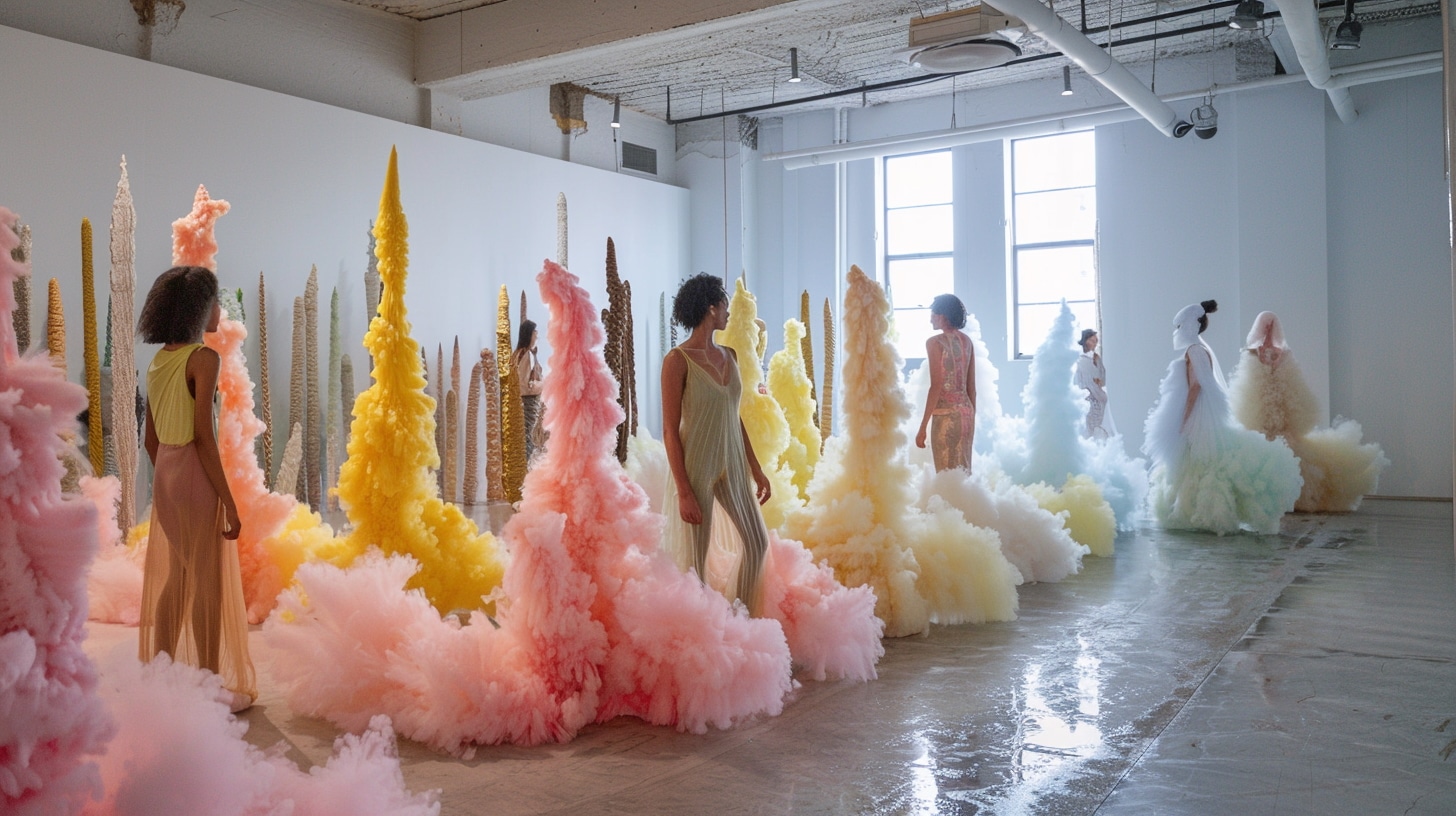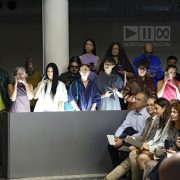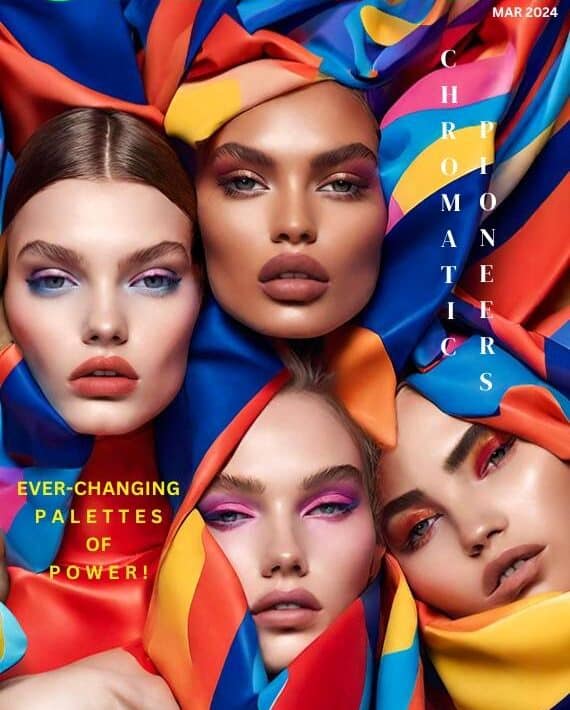Disrupting Fashion’s Footprint: The Mineral Supply Chain



Strategic Advisor – Brand Expansion, Retail Innovation & Market Execution…
Fashion is standing at a tipping point, and the call for transformation is no longer optional. Regulatory pressures like the EU’s REACH legislation and rising consumer demand for accountability are forcing the industry to confront its polluting legacy. One of the most urgent issues? Textile dyeing, it’s responsible for up to 20% of global industrial water pollution, according to World Bank estimates. Just one tone of dyed fabric can contaminate up to 200 tones of water, an imbalance the planet can no longer afford.
At the same time, luxury markets are pivoting toward traceable sourcing and ethical storytelling. Recovered and locally mined metals are finding their place in fine jewelry, not just as material alternatives, but as powerful tools of provenance and accountability. Meanwhile, the e-waste economy, expected to exceed 82 billion kilograms annually by 2030 according to the Kearny Consulting agency, offers a rich yet underutilized stream of recoverable gold, palladium, and rare earths, an untapped luxury mine in disguise.
As rising temperatures and erratic climates threaten traditional cotton farming, brands are being forced to rethink not just materials, but entire systems of production. The future belongs to fibers that endure, dyes that nourish instead of poison, and closed-loop ecosystems, where biodegradability and digital traceability work in tandem. Circularity and regeneration are no longer niche ambitions; they are becoming the business model.
Mineral Dye Innovation
The age of petrochemical pigments is dimming, and science is coloring in the future. Across labs from TU Delft to CSIR–NCL India and the University of Leeds, researchers are engineering hybrid indigo pigments stabilized by zeolites, earth-born minerals that dramatically improve colorfastness to light and chemical exposure. The result? A new frontier of naturally anchored hues with industrial-grade resilience.
On another front, a living palette is emerging. Biotech innovators like Living Ink and Colorifix are cultivating color with microorganisms, algae and bacteria that produce rich, renewable dyes with a fraction of the resource footprint. Already, brands like Stella McCartney are weaving these lab-grown pigments into their materials, signaling a mainstream shift toward regenerative color systems.
And Ferragamo’s “Back to Earth” capsule application of mineral powders in leather and textile design offers a compelling case study for circular pigment integration. For regions rich in mineral heritage, this isn’t just artistic experimentation, it’s an invitation to ground fashion innovation in local geology.
Recycled, Regrown & Responsibly Made: How Fine Jewelry is Redefining Precious
As mining rightly continue to be under deeper ethical and environmental scrutiny, a new wave of fine jewelry brands is redefining what it means to be precious. From reclaimed gold and palladium sourced from e-waste and scrap to lab-grown diamonds created with renewable energy, circularity is no longer a niche, it’s the new luxury baseline. Korloff is among the heritage maisons weaving recycled metals into timeless pieces, honoring craftsmanship while lightening environmental impact.
Meanwhile, Velvet Desert embraces material-driven storytelling through small-batch collections, using ethically sourced minerals and locally processed metals to ground their design in transparency and place.
From Paris, JEM (Jewellery Ethically Minded) merges architectural minimalism with traceable beauty, working exclusively with Fairmined-certified recycled gold and lab-created diamonds to reduce social and ecological cost, without compromising radiance.
At the frontier of material intimacy is WWAKE, a Brooklyn-based brand known for integrating upcycled heirlooms, 100% recycled metals, and ethical stones into delicate sculptural designs.
And for those seeking brilliance without burden, VRAI is leading the charge with lab-grown diamonds produced using carbon-neutral hydropower and set in fully recycled gold, turning technology into timeless beauty.
Climate-Resilient Fibers & Future-Forward Materials
As climate volatility disrupts ecosystems and global supply chains, fashion is beginning to embrace materials that don’t just endure but adapt.
Bio-fabricated fibers are at the forefront of this shift. From Mycotex’s mycelium-grown leather to Piñatex derived from pineapple leaves and Orange Fiber spun from citrus waste, these next-gen textiles are born from agricultural byproducts, turning waste into value. Not only do they dramatically reduce reliance on land, water, and toxic chemicals, but they also signal how regeneration is no longer an abstract ambition, it’s arriving, and fast. Even performance brands are getting on board: Vivobarefoot recently launched a canvas shoe made from HyphaLite, a cutting-edge, mushroom-based alternative to leather.
Meanwhile, bacterial cellulose and algae yarns are being grown, not extracted, in biolabs. Brands like Vollebak are experimenting at the molecular level, cultivating biodegradable, low-impact fibers that offer breathability and circularity by design. The result is a new generation of materials built for a changing planet.
Material intelligence is also becoming climate smart. Graphene-enhanced textiles, like outerwear from Graphene-X and Kyorene® yarns by Graphene One, combine temperature regulation, moisture wicking, and antibacterial performance, making them ideal for extreme environments. For luxury consumers, graphene’s unmatched durability, temperature regulation, and featherlight feel offer not only superior comfort but also a new standard of performance-driven elegance that elevates everyday wear into a high-tech experience. And on the edge of innovation, self-healing fabrics are emerging, using water-activated coatings to seal small tears, pointing to a future where garments regenerate rather than wear out.

Mineral palette, bio-based texture, traceable luxury; Mood board By Linda Hendricks
From lab-grown leathers to thermo-adaptive shells, the future of fashion isn’t just sustainable, it’s biologically attuned and climate resilient by design.
As fashion begins to outgrow its obsession with material miracles and leans into full-system overhauls, traceability emerges not as a trend but as the backbone of any regenerative vision. Enter the Aura Blockchain Consortium, a quiet yet seismic collaboration between LVMH, Prada, Cartier, and OTB. With Aura, these legacy houses aren’t just tracking garments, they’re scripting a new language of radical transparency, one blockchain-stamped step at a time, from resource to retail.
But let’s not reduce this to anti-counterfeit tech. As Daniel Ott of Aura points out, this is about more: layering truth into the supply chain, from sourcing claims to resale authentication. This is the kind of clear, coded accountability fashion has been dodging for far too long. Now, it’s becoming non-negotiable. Because if we’re serious about regeneration, we need receipts. And Aura? It’s one of the first to print them.
Conclusion
As fashion undergoes a long-overdue material revolution, the convergence of sustainability and technological innovation is no longer aspirational, it’s imperative. Emerging solutions like mineral dyes, recovered metals, and graphene-infused textiles are redefining luxury with materials that are lower-impact, adaptive, and traceable. These innovations challenge the industry’s extractive legacy, urging brands to pivot toward circular ecosystems built on transparency, accountability, and resilience.
But the ultimate goal isn’t just to sustain, it’s to regenerate. The future of fashion demands systems that restore and replenish, giving back more than they take. Regenerative fashion isn’t a trend; it’s a full-scale reinvention of how we create, consume, and connect with materials. The brands that embrace this shift will not only future-proof their value chains but will also redefine luxury as a force for environmental and cultural renewal.
What's Your Reaction?

Strategic Advisor – Brand Expansion, Retail Innovation & Market Execution Linda Hendricks is a Franco-American strategic advisor working at the crossroads of luxury, fashion, innovation, and purpose. Splitting her time between Paris and New York, she supports fashion and lifestyle brands in designing omnichannel expansion strategies, go-to-market plans, and experiential activations, always with a focus on long-term brand equity and sustainable impact. With over 15 years of experience in brand development, creative strategy, and market execution, Linda began her career in trend forecasting before launching Iconsvoice, France’s first digital fashion tradeshow. She later expanded the platform into a creative agency that has supported over 70 emerging and established brands, top-tiers artist, department stores, and malls across Europe, the U.S., and the Middle East. Her client portfolio includes global leaders such as WGSN, NellyRodi, Trendstop.com, The Ascott Group, Beaugrenelle Paris, and La Compagnie de Phalsbourg. She owns an extensive international network of creatives, vendors, and agencies, that contributes and realizes missions for some of the world’s most iconic fashion houses. As a former Senior Consultant at Infosys in New York, Linda played a key role in the digital transformation of major beauty and fashion brands. More recently, she proposed U.S. market development strategies for luxury and fashion brands, blending immersive activations, private clienteling, exclusive partnership and modular business models to drive both ROI and narrative resonance. An Executive MBA graduate from HEC Paris, Linda further deepened her expertise in sustainability systems and impact intrapreneurship through advanced programs at Yale and FDC Brazil. She currently serves as the U.S. & French Fashion Business Editor for Gazzetta Magazine, is a Board Member of 1000 Dreams Fund, and an advisor to the HEC Women in Business Club. Her mission: to help brands grow with soul, scale with meaning, and lead with clarity.



